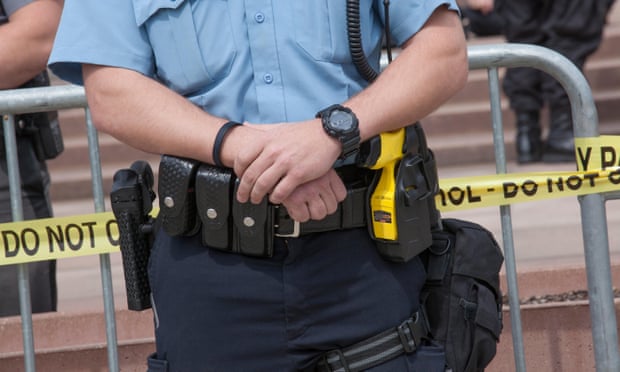Ohio officer kills 20-year-old Black man seconds after opening his bedroom door
"Donovan Lewis was pronounced dead at the hospital after Columbus police shot at him in his own bed

A police officer in Ohio fatally shot a Black man within a second of opening his bedroom door early Tuesday morning as the officer was attempting to serve him an arrest warrant.
The killing was captured on police body camera. The man was not armed and was identified by authorities as 20-year-old Donovan Lewis, who was killed by Ricky Anderson, a Columbus police officer with decades of experience.
According to court records reviewed by TV channel NBC4, Donovan was being served an arrest warrant on charges of improperly handling a firearm, assault and domestic violence.
In the body cam footage aired by NBC4, police officers were shown knocking on an apartment door for 8-10min before being met by a man who opened the door. Upon entering the apartment, officers found another man and detained them both.
The officers then released a police dog which trotted around into the kitchen then barked at a bedroom door. Anderson held the dog back before opening the door and then immediately fired his gun into the bedroom as Lewis sat up in bed.
In a frame-by-frame breakdown of the video, police chief Elaine Bryant said that Anderson fired the gun when Lewis appeared to raise his hand while holding onto something.
“There was, like, a vape pen that was found on the bed right next to him,” Bryant said.
Lewis was transported to a hospital after treatment on the scene and later pronounced dead.
“Donovan Lewis lost his life,” Bryant said in a press conference. “As a parent, I sympathize and grieve with his mother. As a community, I grieve with our community, but we’re going to allow this investigation to take place.”
She added: “We are committed to full transparency … and we’re committed to holding officers accountable if there was any wrongdoing. As the chief, it is my job to hold officers accountable, but it is also my job to offer them support … through the process.”
The investigation has been taken over by the Ohio Bureau of Criminal Investigation."





